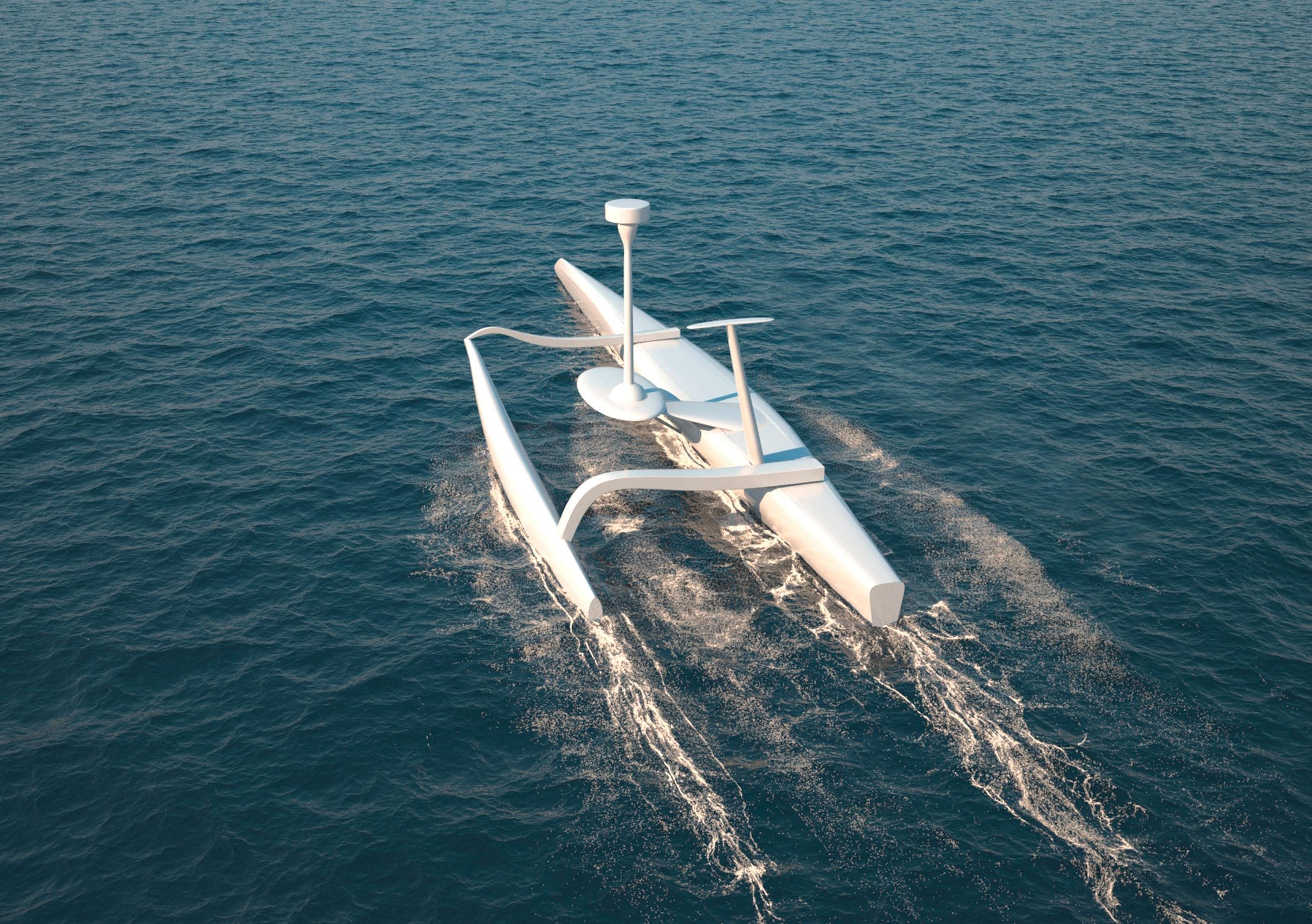This Marine Drone Does Nothing But Listen to Mediterranean Whalesong
A sea-going unmanned vehicle is set to spend the Mediterranean summer cruising around listening to whale song.
Equipped with hydrophones, Sphyrna, an autonomous marine vehicle created by Sea Proven, a French marine robotics company, will record the sounds produced by sperm whales and bottlenose whales.
Acoustics is surely the best angle of attack to better understand these great divers who spend more than 90% of their time underwater, where a lack of light makes other methods of observation more difficult.
The scientific mission will aim to understand the behaviour of whales present in the region, via their song.
The shape of Sphyrna is that of a Polynesian canoe, and featuring a pendulum typical of these boats, connected beneath the hull to ensure stability.
But the comparison stops there. There is no room for a rower, but instead carries a dense concentration of technologies in its 17 m long and 4.10 m wide body.
It is transoceanic, and “able to cross oceans in total autonomy, powered by its solar panels and a small wind turbine,” says Fabien de Varenne, the founder of Sea Proven.
On board, or rather on its pontoon, the Sphyrna will be able to carry up to a ton of data measurement and acquisition equipment.
This is to be its first mission, officially launching this Wednesday in Monaco but taking place from July 15 to August 31, off Toulon and in a part of Pelagos, the sanctuary for marine mammals in the Mediterranean.
Sphyrna will sail in this zone equipped with four hydrophones, immersed microphones and the intent to listen to everything that goes underwater.
“We had launched a call for projects with the scientific community to find a first mission for our maritime drone,” says Fabien de Varenne.
That mission is the project of Hervé Glotin, professor at the CNRS LIS laboratory of the University of Toulon, specialized in acoustic detections, and the association of protection of the Ocean Longitude 181 which swept the spot.
Hervé Glotin expects a lot from this first Sphyrna mission. “We must understand that we do not know much about the lives of sperm whales and whales,” he says.
“These are great divers who spend more than 90% of their time under water at depths where radar does not penetrate and where it is complicated to send cameras. As for sonar [a device that uses sound propagation in the water to detect and locate objects in the water], it disorients the whales and makes them flee. So it’s not a solution anymore. ”
Acoustics, on the other hand, is a very interesting angle of approach. The embedded hydrophones will locate these large mammals in longitude, latitude, but also in depth.
“We can even listen to them hunt, explains Hervé Glotin. “A sperm whale, the largest predator on earth, swallows 400 kg of octopus and small fish a day. As it approaches its prey, the Sperm Whale accelerates its sonar, a mechanism that produces a particular sound. And when this noise stops, it can be estimated that there has been ingestion. By listening to the sperm whales, we are then able to count the number of prey swallowed in one hour by these large cetaceans. ”
Hervé Glotin already knows and studies these characteristic sounds from a sub-surface buoy that his research team has settled south of the Golden Islands in the Port Cros National Park for almost three years.
This buoy can detect and track cetaceans that spend up to 15 km to 20 km distance, but it is a fixed point and therefore limited.
This is where Sphyrna comes in, as the maritime drone will sail in a much larger area than the buoy is capable of monitoring.
The mission hopes to collect a lot more data in a month and a half mission that the scientists will then be able to compare to data recorded in three years by the fixed buoy installed off the Golden Islands.
Hervé Glotin and Fabien de Varenne also hope to recover high quality acoustic recordings, Glotin explains.
“Its engine is totally silent and there is no one on board, which further reduces potential noise,” says the founder of Sea Proven. “And then we can let it drift,” adds Hervé Glotin.
The first objective of this acoustic study will be to better understand the behavior of these great whales – how they hunt, but also how they move, how often they rise to the surface.
“By better understanding their behavior, we will also have a more detailed knowledge of life in the deep ocean,” says Hervé Glotin.





















